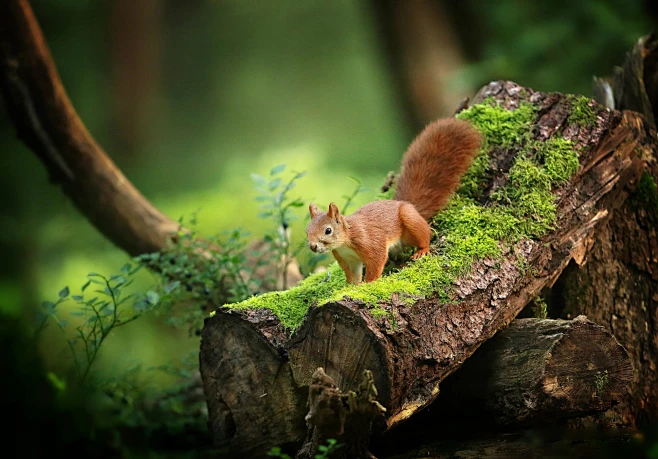When we think about life on Earth, we often imagine lush forests, vibrant flowers, and diverse wildlife. But when it comes to the origins of life, a key question arises: Do plants predate animals? This question takes us on a journey through time, delving into the evolutionary history of life on our planet. By exploring the evolution of plants and animals, we gain a deeper understanding of how life forms emerged and evolved over billions of years.
In this article, we’ll explore how plants and animals evolved, when they first appeared, and how they shaped the world as we know it.

The history of life on Earth dates back over 3.5 billion years, with the first organisms being simple, single-celled microbes. However, the origins of plants and animals as distinct groups are much more recent. To understand whether plants predate animals, we need to explore the evolutionary timeline.
Plants are among the oldest life forms on Earth. The earliest plants likely evolved from aquatic green algae around 500 to 600 million years ago during the Cambrian Period. These early plants were simple, non-vascular organisms that grew in water. They didn't have the complex root systems or vascular tissues (xylem and phloem) that we associate with plants today.
As plants evolved, they began to adapt to terrestrial environments, which was a revolutionary step in the history of life on Earth. The first land plants appeared around 470 million years ago during the Ordovician Period. These early land plants, known as bryophytes, were small and low-growing, like mosses. Over time, they evolved more complex structures, such as roots, stems, and leaves, and spread across the land.
While plants were taking root on land, animals were evolving in the oceans. The first multicellular animals appeared around 600 million years ago, during the Ediacaran Period, and were simple, soft-bodied creatures. These early animals, such as sponges and cnidarians (like jellyfish), were very different from the complex animals we see today.
The true explosion of animal diversity, however, occurred during the Cambrian Explosion around 541 million years ago. This period marked the sudden appearance of most major animal phyla, including arthropods, mollusks, and chordates. These animals were primarily marine, and many had hard body parts like shells and exoskeletons, which are found in fossils today.
Based on current scientific evidence, plants actually predate animals. Plants began to colonize land around 470 million years ago, while the earliest animals did not evolve until approximately 600 million years ago. Although the first multicellular animals appeared before the first land plants, it was the plants that first adapted to life on land and played a key role in shaping the Earth’s ecosystems.
Even though plants may have appeared before animals in the fossil record, plants and animals evolved alongside each other, influencing one another in a process known as co-evolution. As plants began to spread across the land, they provided a new source of food and habitat for animals. This allowed for the evolution of herbivores that fed on plant matter, and in turn, carnivores that preyed on those herbivores.
Plants also evolved mechanisms to attract animals for pollination and seed dispersal. Flowers, fruit, and other adaptations became essential for the reproduction of many plant species, leading to the intricate relationships we see today between flowering plants and pollinators like bees, butterflies, and birds.
The earliest life forms on Earth, including both plants and animals, played an essential role in shaping the planet's ecosystems. Early plants, with their ability to perform photosynthesis, helped create an oxygen-rich atmosphere, which was essential for the later evolution of animals. As plants began to thrive on land, they helped build soil and stabilize ecosystems, paving the way for more complex life forms to evolve.
The early animals, while simpler, contributed to the diversification of ecosystems. They began to develop specialized feeding habits, such as grazing, predation, and scavenging, which helped shape the food web. As animals evolved, they also began to influence the development of plants through grazing pressure, pollination, and seed dispersal.
Life on Earth began with simple, single-celled organisms, but over billions of years, both plants and animals evolved into the complex, multicellular organisms we recognize today. The evolutionary process involves gradual changes in species over time, driven by natural selection, genetic mutations, and environmental pressures.
For both plants and animals, early forms were simple and limited to basic survival needs. However, as time passed, both groups adapted to a wide variety of environments, resulting in the diverse range of species we see today. The evolution of plants and animals is marked by key milestones, such as the rise of photosynthesis, the development of land-based life forms, and the explosive diversification during the Cambrian period.
To answer the question—Do plants predate animals?—the answer is yes. Plants evolved on Earth before animals, with the first land plants appearing around 470 million years ago, while the first true animals evolved about 600 million years ago. Though both plants and animals evolved in parallel, their relationship has been one of mutual influence, with each playing a crucial role in shaping the ecosystems of the Earth.
Understanding the origins of plants and animals helps us appreciate the complex web of life that exists on our planet. As we continue to explore the evolutionary history of life on Earth, we uncover the amazing diversity and adaptability of life forms that have helped shape the world as we know it today.
We created this article in conjunction with AI technology, then made sure it was fact-checked and edited by a Animals Top editor.